5 spots you need to see to truly appreciate autumn in Germany
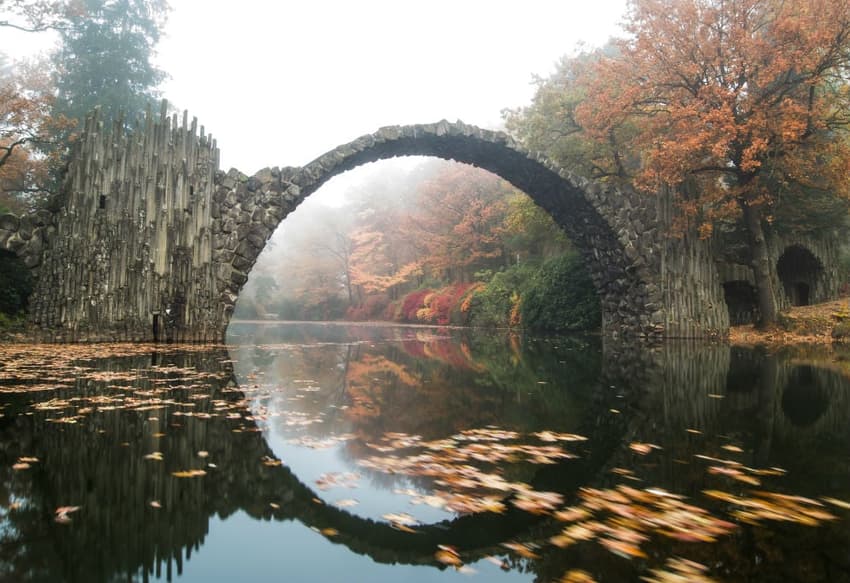
With autumn kicking off on Friday along with cooler temperatures and the leaves changing colour, it's the best time of year to take advantage of these unique sights across the country.
For all The Local's guides to visiting Germany CLICK HERE
Rakotzbrücke (The Devil's Bridge)
Saxony probably isn’t the first German state people think of when it comes to travelling in the country during autumn. This is a shame though, because it has lots to offer, including a park in Gablenz near the border with Poland that’s home to one of the most extraordinary bridges in Germany.
Visiting the Rakotzbrücke, which is also known as the "Devil's Bridge," is sure to be a mystical experience in autumn. The semicircular shape of the bridge and its reflection onto the lake beneath it make the experience of being there on cool autumn days feel like something out of a fairy tale.
The bridge, which is located in Gablenz's Azalea and Rhododendron Park Kromlau, was specially built for aesthetic reasons in the mid-19th century and the stones for its arch were shipped from distant quarries.
Instagrammers may also be pleased to know that the park can be accessed anytime for photo opportunities without an entrance fee.
Lake Constance
There’s no doubt that Germany’s stretch of Lake Constance in Baden-Wurttemburg - the lake also shares a border with Austria and Switzerland - is worthy of a visit all year round, but there’s certainly something special about it in the fall.
It is home to one of the sunniest regions in Germany, and wine is also grown in the area famed for its burgundy grapes. The local monastery vineyard is a visitor favourite.
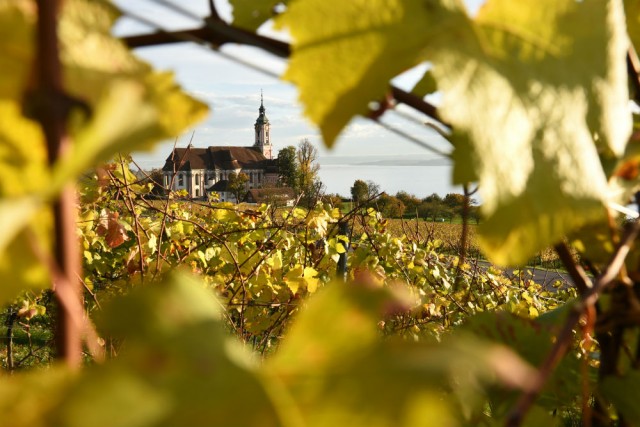 A vineyard at Lake Constance in the fall season. Photo: DPA.
A vineyard at Lake Constance in the fall season. Photo: DPA.
Attracting around half a million visitors each year, those who are lucky enough to come in the fall are invited to do everything from cycle around the harbour or relax by the water’s edge with fewer tourists around than in the summer.
Active travellers can hike up the Pfänder mountain instead of taking the cable car for a unique, panoramic view over the lake. On a clear day the Swiss Alps may even be visible to the south.
Lüneberg Heath
The Lüneberg Heath, which is named after the nearby town of Lüneberg in Lower Saxony, is a large nature park containing heath and woodland in northern Germany.
It’s also one of the top places in the country to see autumn leaves and connect with nature in the autumn; the high proportion of woods make the park one of the largest areas of protected woodland in the country. Around this time the mixed forests start to glow golden yellow, conjuring up a special light.
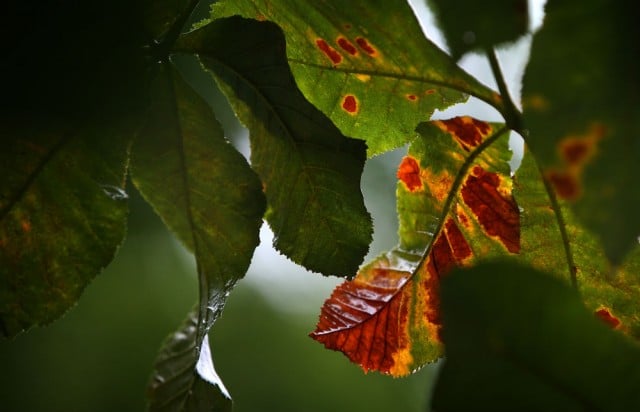 File photo: DPA.
File photo: DPA.
The oldest nature park in Germany, in 1921 it was established as a nature reserve and has since expanded to about four times its original area.
Those who enjoy going on invigorating hikes might be attracted by the fact that the entire nature reserve is car-free. While on a hike during your visit, you may get lucky and hear nothing but the rustling of crisp autumn leaves and the chirping of birds.
Plan a trip now and you might still be able to catch the Lüneberg Heath’s heather blossoms. The strong purple colour of millions of blossoms attract lots of tourists and create a visual charm for the region; they can usually be seen from the beginning of August to mid-September.
Rügen
While serenity can be had on many of Germany’s islands, there’s something almost romantic about the country’s largest island located in the Baltic Sea, Rügen.
One of the most popular holiday destinations for Germans all year round, by early autumn Rügen’s first beech trees start to turn yellow. But what’s particularly breathtaking to see during the fall season also happens to be one of Rügen’s main highlights: its famous chalk cliffs which line 15 kilometres of the coast.
The island has a variety of landscape features though, so if you’d prefer to get some fresh air along its 60 kilometre coastline of fine, sandy beaches instead, go for it. There are plenty of seaside resorts and sleepy fishing villages at your disposal as well.
Kellerwald-Edersee National Park
In central Germany there's a UNESCO World Heritage site in a national park which may very well be Germany’s best-kept autumn secret. This is because it contains an ancient beech forest which has survived the influence of the Ice Age, according to the national park’s website.
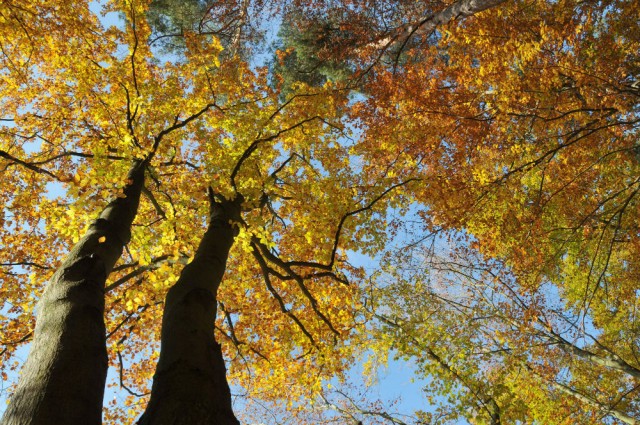 Autumn foliage and beech trees in Hesse. Photo: DPA.
Autumn foliage and beech trees in Hesse. Photo: DPA.
Situated in north Hesse, Kellerwald-Edersee National Park’s picturesque array of golden beech leaves beckon visitors to come in the autumn.
Covering a hilly area of around 6,000 hectares, the sea of beech trees surround pristine Lake Edersee. Nearby there are meandering streams, deep gorges and ancient oaks just waiting to be discovered too.
For the adventurous types who dare to venture further into the national park, at the Edersee Wildlife Park you can get up close with different types of bat species, wolves, and wild horses.
Comments
See Also
For all The Local's guides to visiting Germany CLICK HERE
Rakotzbrücke (The Devil's Bridge)
Saxony probably isn’t the first German state people think of when it comes to travelling in the country during autumn. This is a shame though, because it has lots to offer, including a park in Gablenz near the border with Poland that’s home to one of the most extraordinary bridges in Germany.
Visiting the Rakotzbrücke, which is also known as the "Devil's Bridge," is sure to be a mystical experience in autumn. The semicircular shape of the bridge and its reflection onto the lake beneath it make the experience of being there on cool autumn days feel like something out of a fairy tale.
The bridge, which is located in Gablenz's Azalea and Rhododendron Park Kromlau, was specially built for aesthetic reasons in the mid-19th century and the stones for its arch were shipped from distant quarries.
Instagrammers may also be pleased to know that the park can be accessed anytime for photo opportunities without an entrance fee.
Lake Constance
There’s no doubt that Germany’s stretch of Lake Constance in Baden-Wurttemburg - the lake also shares a border with Austria and Switzerland - is worthy of a visit all year round, but there’s certainly something special about it in the fall.
It is home to one of the sunniest regions in Germany, and wine is also grown in the area famed for its burgundy grapes. The local monastery vineyard is a visitor favourite.
 A vineyard at Lake Constance in the fall season. Photo: DPA.
A vineyard at Lake Constance in the fall season. Photo: DPA.
Attracting around half a million visitors each year, those who are lucky enough to come in the fall are invited to do everything from cycle around the harbour or relax by the water’s edge with fewer tourists around than in the summer.
Active travellers can hike up the Pfänder mountain instead of taking the cable car for a unique, panoramic view over the lake. On a clear day the Swiss Alps may even be visible to the south.
Lüneberg Heath
The Lüneberg Heath, which is named after the nearby town of Lüneberg in Lower Saxony, is a large nature park containing heath and woodland in northern Germany.
It’s also one of the top places in the country to see autumn leaves and connect with nature in the autumn; the high proportion of woods make the park one of the largest areas of protected woodland in the country. Around this time the mixed forests start to glow golden yellow, conjuring up a special light.
 File photo: DPA.
File photo: DPA.
The oldest nature park in Germany, in 1921 it was established as a nature reserve and has since expanded to about four times its original area.
Those who enjoy going on invigorating hikes might be attracted by the fact that the entire nature reserve is car-free. While on a hike during your visit, you may get lucky and hear nothing but the rustling of crisp autumn leaves and the chirping of birds.
Plan a trip now and you might still be able to catch the Lüneberg Heath’s heather blossoms. The strong purple colour of millions of blossoms attract lots of tourists and create a visual charm for the region; they can usually be seen from the beginning of August to mid-September.
Rügen
While serenity can be had on many of Germany’s islands, there’s something almost romantic about the country’s largest island located in the Baltic Sea, Rügen.
One of the most popular holiday destinations for Germans all year round, by early autumn Rügen’s first beech trees start to turn yellow. But what’s particularly breathtaking to see during the fall season also happens to be one of Rügen’s main highlights: its famous chalk cliffs which line 15 kilometres of the coast.
The island has a variety of landscape features though, so if you’d prefer to get some fresh air along its 60 kilometre coastline of fine, sandy beaches instead, go for it. There are plenty of seaside resorts and sleepy fishing villages at your disposal as well.
Kellerwald-Edersee National Park
In central Germany there's a UNESCO World Heritage site in a national park which may very well be Germany’s best-kept autumn secret. This is because it contains an ancient beech forest which has survived the influence of the Ice Age, according to the national park’s website.
Autumn foliage and beech trees in Hesse. Photo: DPA.
Situated in north Hesse, Kellerwald-Edersee National Park’s picturesque array of golden beech leaves beckon visitors to come in the autumn.
Covering a hilly area of around 6,000 hectares, the sea of beech trees surround pristine Lake Edersee. Nearby there are meandering streams, deep gorges and ancient oaks just waiting to be discovered too.
For the adventurous types who dare to venture further into the national park, at the Edersee Wildlife Park you can get up close with different types of bat species, wolves, and wild horses.
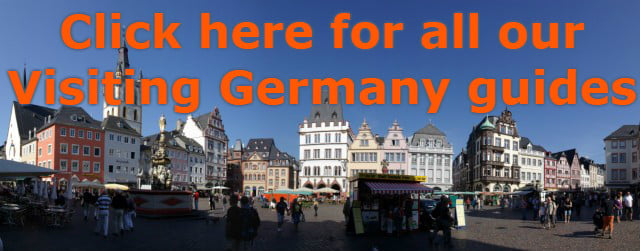
Join the conversation in our comments section below. Share your own views and experience and if you have a question or suggestion for our journalists then email us at [email protected].
Please keep comments civil, constructive and on topic – and make sure to read our terms of use before getting involved.
Please log in here to leave a comment.